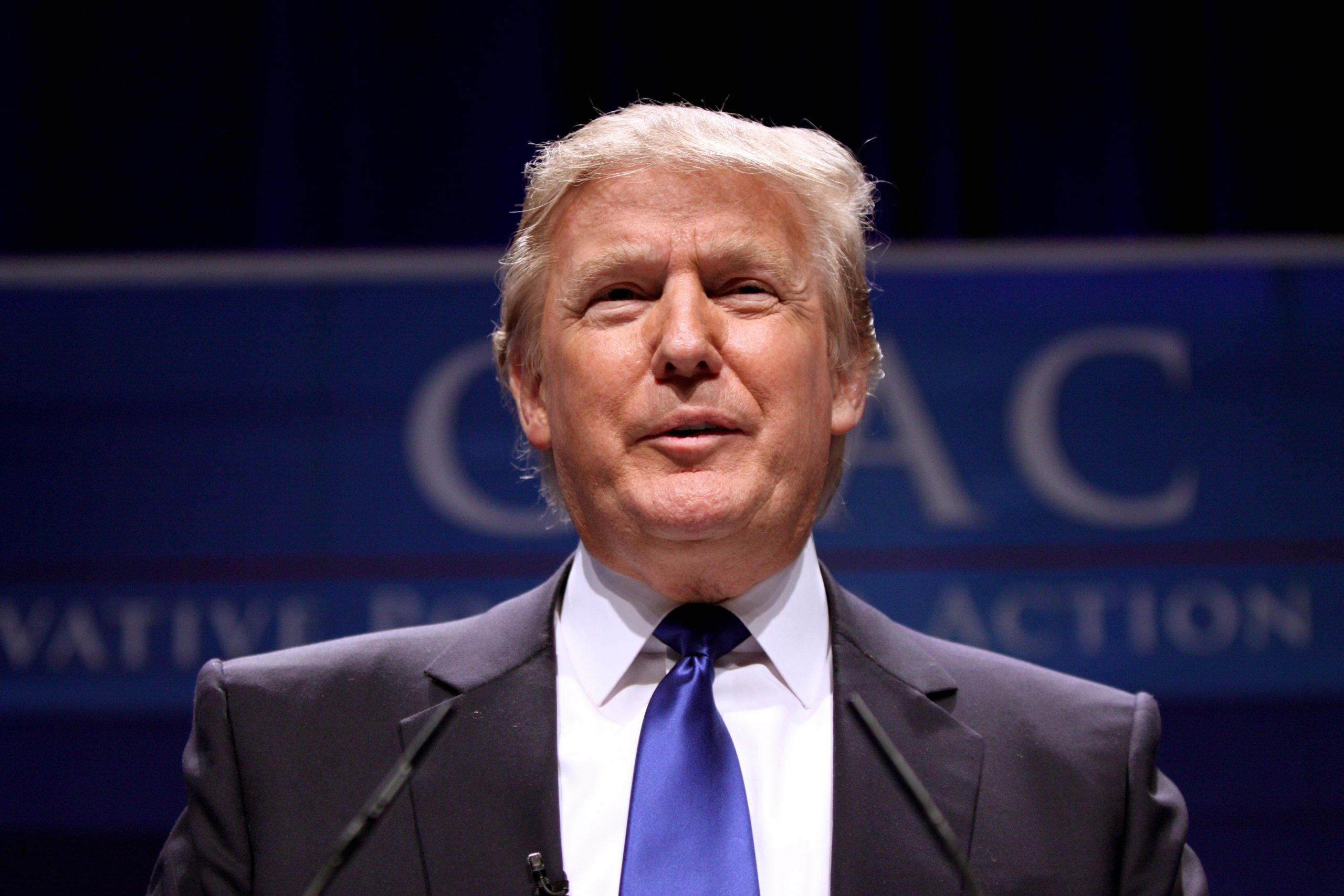Trump’s Big Lie Forces Attention on the Labyrinth of Local Election Offices
As threats to the integrity of elections intensify, a new Bolts database maps out the complex patchwork of local officials responsible for voting systems across the country.
| February 8, 2022

“We have to be a lot sharper next time when it comes to counting the vote,” Donald Trump told Pennsylvania Republicans in a recorded speech, in which he falsely claimed to have carried the state in the 2020 presidential election. “Sometimes the vote counter is more important than the candidate. And we can’t let that ever, ever happen again.”
Trump’s remarks came in January, just as the country entered a midterm year that may be decisive for its democracy. Hundreds of local offices that are responsible for running elections will be on the ballot all over the country. Longtime Trump allies, chief among them Steve Bannon, have spread his Big Lie that voter fraud swung the 2020 election against him, and they are striving to take over these offices. In Pennsylvania, they recruited candidates in 2021 to run for “election judge,” a hyper-local and typically uncontested position, with some success.
Pennsylvania may be one of the country’s core swing states, but chances are you haven’t heard of its “election judges.” Even if you closely follow American politics, you likely do not know how their powers compare to those of the state’s county boards of elections, nor when and how any of those officials are selected. For people who hope to protect the election system from the Big Lie, this labyrinth of relevant offices can be a nightmare to navigate.
But what other choice do they have? The bulk of election administration in the United States takes place at the local level, across thousands of counties and municipalities, as Trump and Bannon’s forces well know. Sleepy offices like county clerk or county auditor determine much of what goes into running elections—determining the number and location of polling places, appointing precinct officials, designing ballots, scheduling early voting options, and overseeing voter registration.
These local officials can ease access to the ballot, and Houston’s clerk drew widespread attention for such reforms in 2020. But they can also mar the election process via policies that close down polling locations, purge eligible residents from the rolls, or fuel long lines. More recently, local officials who subscribe to Trump’s false claims about widespread voter fraud are trying to flex their control over the election system. The county auditor and recorder in Colorado’s Mesa County, for instance, is facing an investigation after she allegedly allowed an unauthorized person to access sensitive election equipment in an attempt to prove that Dominion Voting Systems manipulated the 2020 election results.
These local administrators also have clout in state or federal policymaking. They are often members of statewide associations that lobby legislatures. The Florida State Association of Supervisors of Elections, for example, pushed Florida to adopt an online voter registration portal. But in West Virginia, home of U.S. Senator Joe Manchin, the County Clerks Association opposed the For the People Act.
Outside of those broad schematics, though, there is little that can be said with any consistency. Every state structures its system differently. Election administration can also vary wildly from county to county within a state, including in places that are at the center of the national discourse on voting like Georgia and Texas. To make matters more confusing, election administration is frequently split between different institutions even within a county. It pulls in officials like sheriffs and tax-assessors, whose formal titles do not reveal their responsibility for running elections.
This information is difficult to come by, to say the least. Many states provide little if any centralized information about their systems or relevant offices, and it’s even harder to track down when administrators are selected or elected. Even if this was all readily available, the sheer number of election administrators make them a challenge to follow.
This decentralized election administration has a major benefit: It helps prevent any sort of widespread hacking. With so many offices in so many municipalities, it would be functionally impossible to rig a large-scale election. But this dynamic also creates layers of inequity. Depending on where they live, voters within the same state may face different rules. Their local administrators might undertake voter registration campaigns with different levels of enthusiasm, or apply different standards to how liberally to toss out mail-in ballots.
It also creates more opportunities for malicious actors to take control of the electoral process with effects that ripple out beyond their jurisdiction. A well-financed group’s concerted efforts to win such offices can remain largely under-the-radar, as in Pennsylvania in 2021. Voting rights activists seeking to expand access to the polls may comparatively struggle to organize inside opaque election systems that usually draw little public attention.
Today Bolts is publishing an original database that compiles, state by state, the local institutions that are responsible for administering elections at the county and municipal level.

Who Runs Our Elections
Each state’s system is laid out in some detail—including the office, the method and timing of its selection or election, and its powers—within the limits of what is possible to convey in one database. In many states, the degree of internal inconsistency is such that a full accounting needs specialized databases specific to the state. And in almost every state, the process of tabulating, canvassing, and officially certifying the votes cast, is conducted in a separate process that may not always involve the same administrators but that has also come under conservative attack. Bolts will dig into these complexities in future work.
Take California, where election administration for most counties is in the hands of a clerk—who may or may not be elected, depending on the details of the county charter. In some places, however, a registrar of voters steps into the clerk’s shoes. In Wisconsin, county clerks and municipal clerks split responsibilities in overlapping jurisdictions—unless you live in Milwaukee. In Alabama, residents register to vote through a board of registrars appointed by the governor, auditor, and commissioner of agriculture, and they vote in precincts managed by officials selected by appointing boards that include the county sheriff, all while major parts of the voting process are also administered by county probate judges serving six-year terms.
In Texas, tax collector-assessors are responsible for voter registration by default, and county clerks are in charge of running elections. But counties can swap those roles, or else entirely strip these officials of their direct duties by instead creating county election administrators. And it doesn’t end there: In some instances the tax collector-assessor is also the sheriff, leaving voter registration in the hands of local law enforcement. While that particular arrangement is rare, sheriffs are powerful actors when it comes to elections nearly everywhere in the country: They effectively control whether hundreds of thousands of people detained in local jails will get to exercise their right to vote.
Many of these officials are elected directly by voters—to irregular, staggered terms that are sometimes not even constant within a state, let alone nationally.
Florida’s supervisors of elections, for instance, will generally not be on the ballot until 2024, while in Nevada, a state that Trump lost only narrowly and that is now home to prominent Republicans pushing the Big Lie, county clerks are up this year. In Connecticut and Massachusetts, consistency goes out the window as clerks serve varying amounts of time in different municipalities.
In places where election administrators are not elected but rather appointed by other public officials, pressure has not quelled. It has turned some of those appointing institutions into local battlegrounds over the Big Lie because of the indirect control they exercise on the electoral process.
State-level officials, who have significant responsibilities of their own in running elections, have walked into the breach as well. Republican legislatures have intervened to undermine local election administration. In Georgia, for example, the state legislature has authorized the Republican-dominated State Board of Elections to undertake a “performance review” of local election administrators—and to replace administrators they deem as ineffective. In Texas, Republican lawmakers have severely constrained the ability of local administrators to expand access to the ballot, as Bolts reports on today, a response to the innovative policies adopted by public officials in the state’s large urban counties during the 2020 presidential election. Colorado is witnessing the inverse dynamic between its state and local governments as the Democratic secretary of state is battling the Mesa County Clerk.
The new Bolts database attempts to add clarity to the powers, election, and selection process of these critical local offices.
Bolts will publish additional state-specific databases in the future for those states where the distribution of roles and election calendar is especially convoluted.
All of this complexity can sound overwhelming and difficult to sort through—and it is. Yet however tempting it is to look away, this bureaucratic tangle has real-world consequences. These offices, and the local elections that influence them, shape the hurdles people face in registering to vote and casting ballots. If Trump’s own warnings are to be heeded, they could in the future also determine whether the will of the people is heard and respected.

